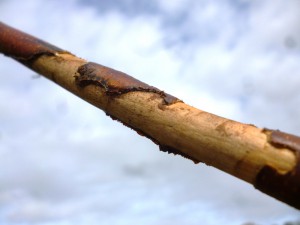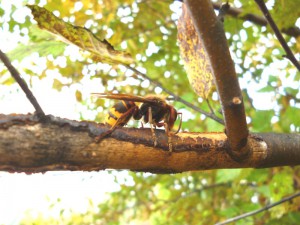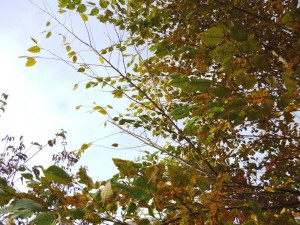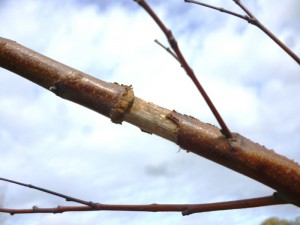During the later weeks of summer & early weeks of fall the mysterious removal of bark sections typically found on branches of Birch, Rhododendron, and Lilac can sometimes be observed. These girdled or stripped bark sections are probably being done by European Hornets. These vespids have been reported to potentially have a worse temperament than timber rattle snakes.
European Hornets (Vespra crabro) are amber, honey colored wasps and are 2X the size of bald-faced hornets. They are the largest, true hornets in North America. With powerful jaw-mandibles, the worker hornets can gouge significant bark sections in order to mix the woody tissue with their saliva to create paper nests and also feed young larvae. Branch feeding can also provide nourishment from the sap to the workers. If branches become girdled (they sometimes feed as if eating corn on the cob), then death above this area is inevitable since conducting tissues are severed. Compounding the problem, similar to yellow-bellied sapsuckers, these hornets often return each season to the same tree or shrub.
The size of European Hornet colony nests can range between 300-1000 workers. The colony can remain active until the late weeks of October & early November until all members begin to quickly die-off, with the exception of the queen. Only the overwintering queens survive within protected nest areas. Nests can typically be found near girdled trees/shrubs within the cavities of hollow tree trunks (often times more than 6 feet above the ground). They can also be found within wall voids of building structures. Observing flight patterns away from host trees/shrubs may help to locate nest locations. However, workers will often be most actively foraging at night.
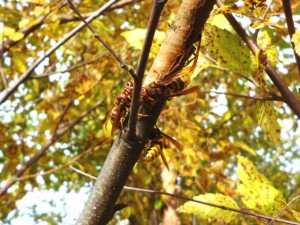
When foraging, these social hornets will often group together & produce significant feeding damage on a selected branch. Photo by SK Rettke of RCE
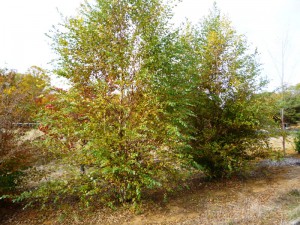
After selecting a birch, rhododendron, or lilac the European hornets may return to the same tree/shrub season after season. Photo by SK Rettke of RCE
European Hornets are actually excellent predators & can provide some beneficial pest controls (e.g., moths, caterpillars, yellow-jackets). However, the bad news is that they can be a threat to domestic honeybee hives and potentially cause some significant reductions. Workers may sting if handled, but are generally not aggressive towards people, but will become agitated & defensive if the nest colony is threatened. This hornet can sting repeatedly & will cause swelling & pain that can persist for several days. If captured in a small container, this hornet will often kill itself by violently knocking against the sides of the container. (Talk about being “as mad as a hornet.”)
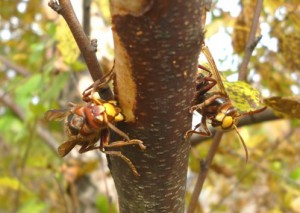
Powerful mandibles of hornet at left gouge into the bark & sap tissue. Hornet at right soon became agitated & attacked the camera. Photo by SK Rettke of RCE
There are no registered landscape or nursery pesticide materials for controls. Plugging or use of an insecticide at entrance areas in trees or wall voids will probably not be effective since a new entrance will typically be created. When necessary, hire a professional exterminator for the safe removal of nests.
